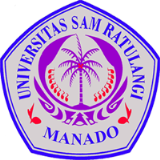Pertumbuhan Trepang Holothuria scabra yang dipelihara dalam kurungan dengan substrat berbeda di Perairan Pantai Bahoi
Abstract
This research was conducted to examine the effect of different substrates on the growth of Sea Cucumber Holothuria scabra reared in cages in Bahoi Coastal waters. This research was conducted from April to June 2021 in Bahoi Coastal Waters, West Likupang, North Minahasa. The method used in this research is the observation method with three treatments: A (sand), B (mud), C (seagrass), and three replications. The cages are made of nets size 100 cm x 100 cm x 50 cm as many as 9 cages. The sea cucumber size data was collected every two weeks. Samples of sea cucumber were taken randomly from each cage, left for ± 10 minutes, photographed, weighed, then recorded. Data collection for water quality is carried out every week during the day at the lowest tide, between 12:00 to 14:00. Water quality parameters were measured using a thermometer, refractometer, and litmus paper. Based on the research results, the average absolute weight growth and daily growth rate of sea cucumber reared with mud substrate showed the best results, that is 0.55 g and 0.72%, while the sand and seagrass substrates showed negative values. The results of ANOVA (analysis of variance) showed that there was no significant difference between absolute growth and daily growth rate of Sea Cucumber H. scabra reared on sand, mud, and seagrass substrates.
Keywords
Full Text:
PDFDOI: https://doi.org/10.35800/bdp.10.2.2022.36088
Refbacks
- There are currently no refbacks.

This work is licensed under a Creative Commons Attribution-NonCommercial 4.0 International License.






